This post explains how to patch a bicycle tube. If needed, read posts on how to remove wheels and how to take tyres off and tubes out. Finally, here’s a post explaining mounting tyres and tubes onto a rim.
In case you have a problem with a tyre, not a tube – see the article about when should a bicycle tyre be replaced?
Table Of Contents (T.O.C.):
- Inflate (removed) tube to see where the puncture is
- Determinine the cause of the puncture(s)
2.1. Snakebite (pinch-flats)
2.2. Rim/spoke damage
2.3. Puncture in the outer or side section of the tube
2.4. Long cut in the tube - Patch the tube
1. Inflate (removed) tube to see where the puncture is
If a puncture can’t be located visually – very small leaks that can’t be heard, or felt with fingers, try using water:
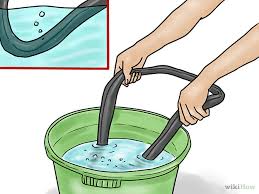
Place (or several places) where the puncture is found should be marked:
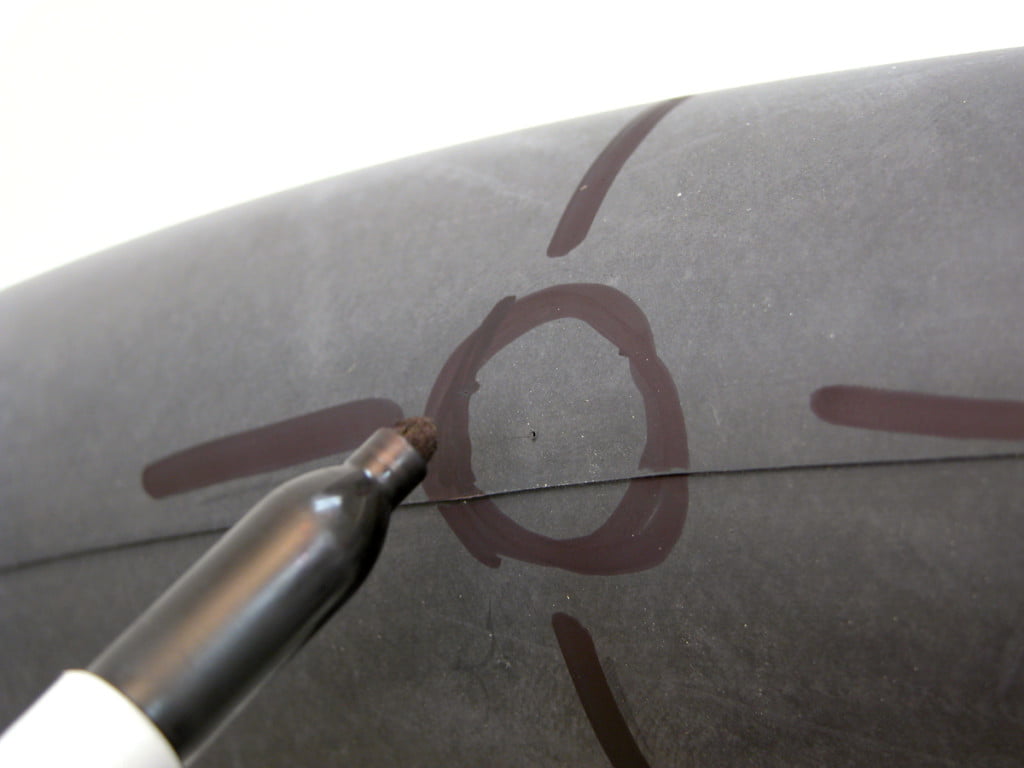
2. Determinine the cause of the puncture(s)
Before patching a tube, a cause of flat should be determined and fixed.
2.1. Snakebite (pinch-flats)
If a tube has two parallel holes (cuts) at a small distance, then it is a pinch flat, also called a snakebite. It happens when a tyre is not inflated enough. When a wheel hits a bump, the tube gets pinched against the rim and gets cut.
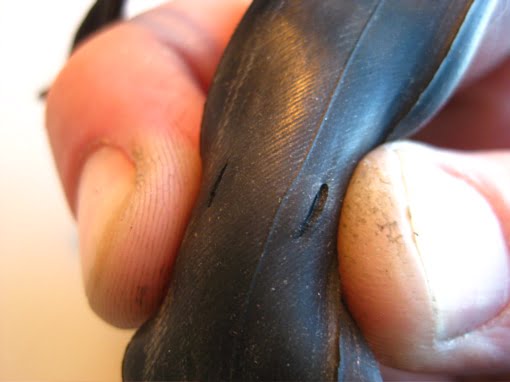
2.2 Rim/spoke damage
If there is a hole on the inner part of the tube, the one towards the rim, then rim needs to be checked for sharp objects, or sharp parts of a damaged rim. Also, rim tape needs to be checked – is it undamaged, is it placed correctly. In case of double walled rims, make sure the rim tape is a good quality high pressure one. All explained in this article:
Rim tape types.
If a cut is near the valve, the tube can not be patched.
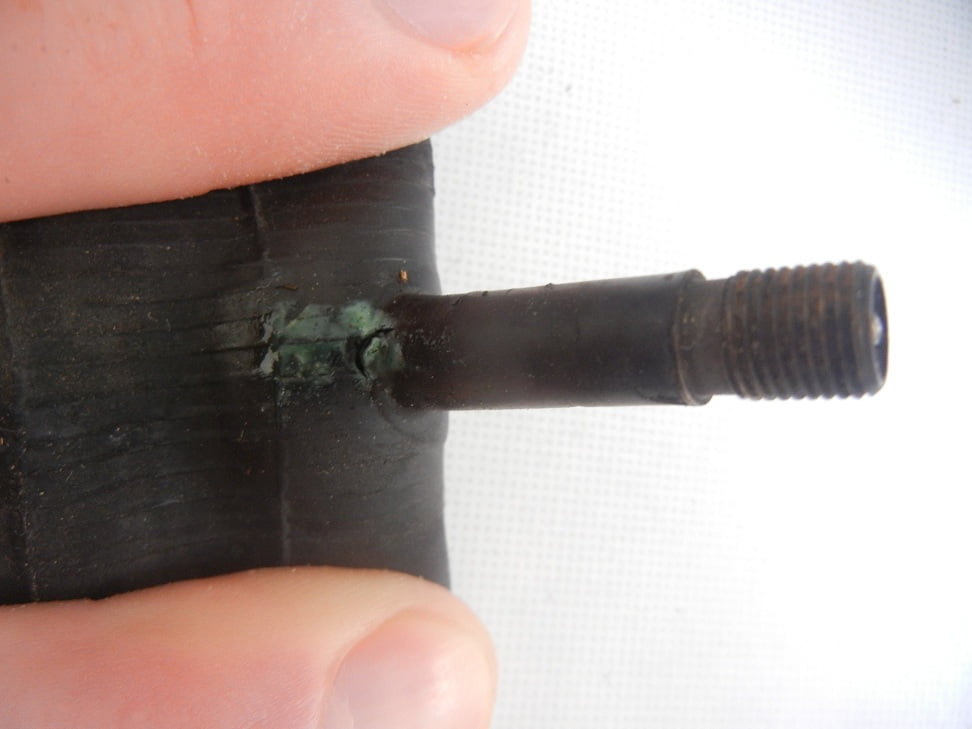
2.3 Puncture in the outer or side section of the tube
Probably from some sharp object – thorn, or glass. Carefully examine the outer tyre, make sure the sharp object is not still in the tyre – to cause another puncture. Turn the outer tyre inside out and examine carefully. Slide some fabric along the inside of the tyre, or fingers, but be careful not to cut your hands.
2.4 Long cut in the tube
If a tube has a large cut, or a blowout like a balloon , then it can not be patched.
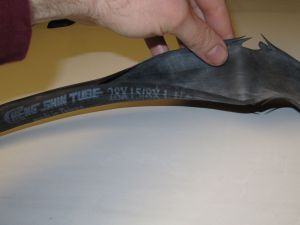
This can be caused by poor tube quality, but more often it is due to outer tyre casing failure, or improper mounting of tyre and/or tube. This can also happen if rims overheat from long braking (if rim brakes are used). Pressure rises with great heat, outer tube gets off the rim from over inflation of the tube and then tube bursts.
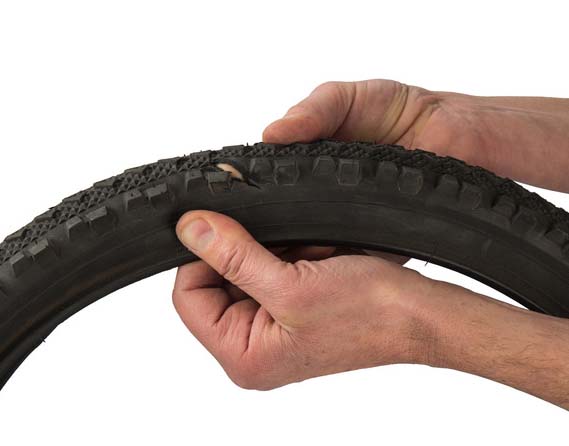
If a tyre wall is cut like in the picture above, tube often explodes. This is caused either by poor tyre quality, or by a large sharp rock.
Tyre can be patched to get home, but needs replacing as soon as possible.
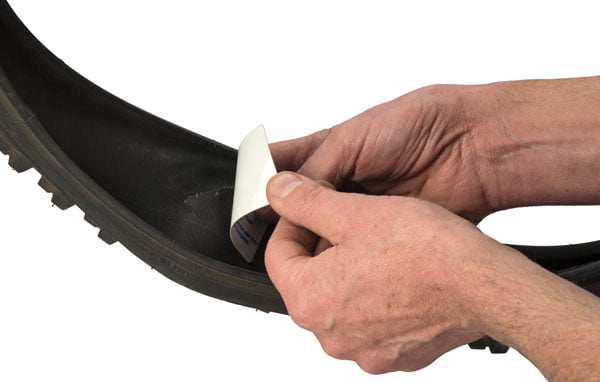
Tyre can be patched either with special tyre patches, or with a piece of hard card board, or with a dollar bill, or a part cut from another (old) tyre, but not the tube! Do not use a piece of tube to patch cut tyre, since it is not firm enough to hold pressure.
Affiliate link of an Amazon.com search for the (as an Amazon Associate I earn from qualifying purchases): Special tyre patch boot (Park Tool TB-2 emergency tyre boot). It is a good “first aid” patch, enabling one to get home and replace the cut tyre. It is not a permanent(ly safe) solution!
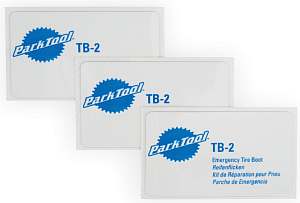
3. Patch the tube
First tube needs to be treated with sand paper around the hole. Place where a patch is glued needs to be totally flat, dry, clean. Especially if it is near a tube seam.

Then add patching glue. Use the cleanest finger to nicely and evenly spread the glue.
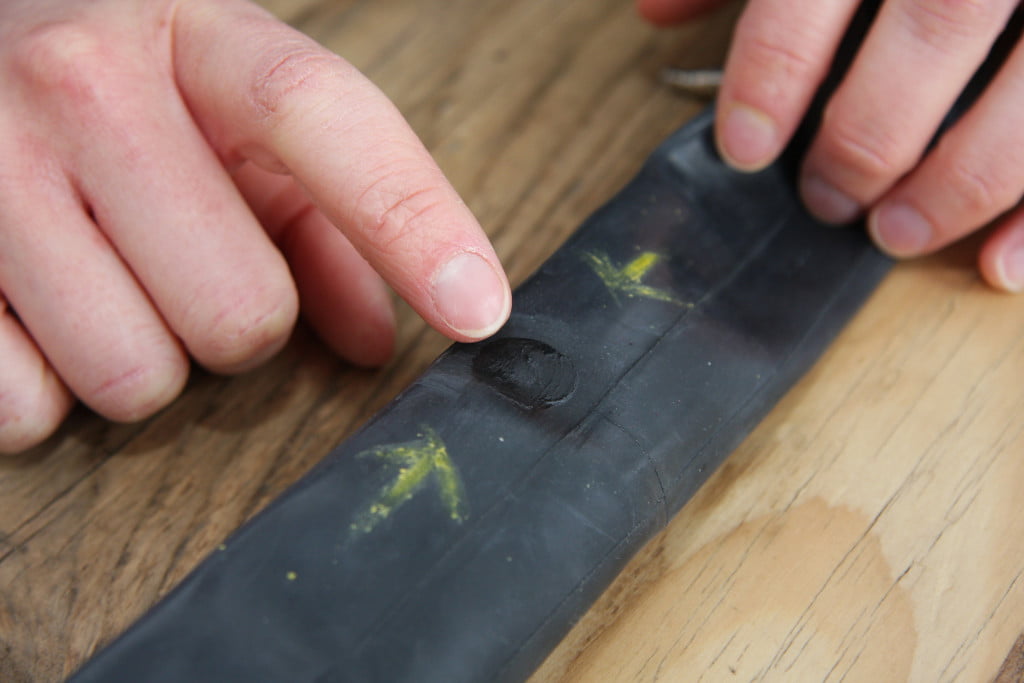
Wait five minutes for glue to dry.
Place a patch. Press firmly, to make sure no air is left trapped.
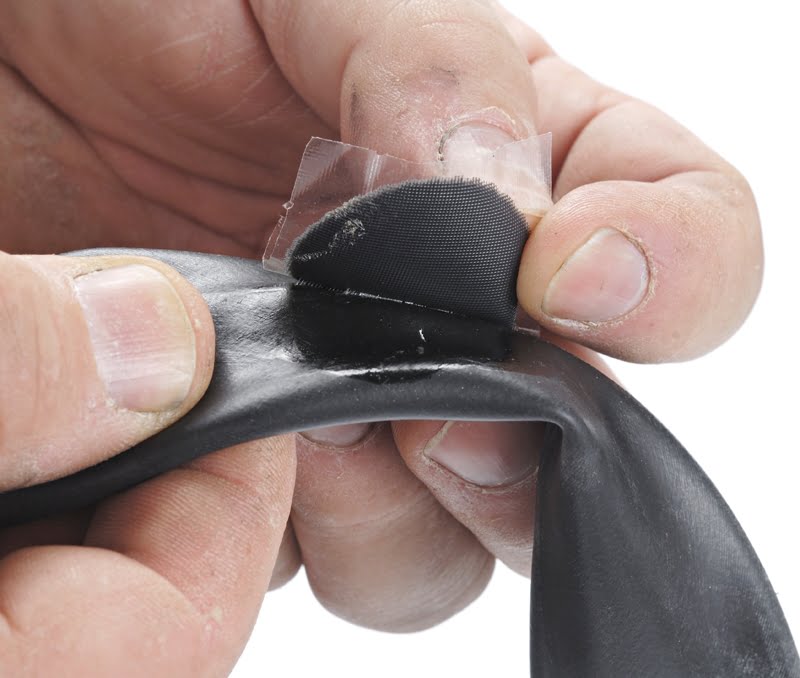
It is best to leave the patched tube to dry completely over night. That is why it is wise to carry a spare tube. Patched tube is packed in a bag, while the spare one is used to continue riding. This way, the same three tubes can be rotated for decades. 🙂
Author’s recommendation for tube patching are Rema (“Tip-Top”) glue and patches. Click on the image below to shop on-line at Amazon.com (as an Amazon Associate I earn from qualifying purchases):
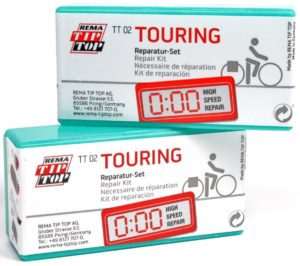
My video demonstration of the procedure:

Any fuether advice for the type of glue to use? As with your discussion of chain oil, there are many confusing choices available: Rubber cement, cold patch, vucanizing, and more. Elmer’s contact cement is inexpensive, and bonds rubber, will it work, and quickly?
Most patch kits include many more patches than the glue that is necessary to use them. But the price seems to go way up and the quantity goes down if a glue is labelled “bicycle”. Thoughts?
From all the things I’ve tried, Rema glue and patches are as good as it gets. Yes, it is a premium price. Still, even for Serbian standards, it is not outrageously expensive.
If I could figure out which ingredients make it different from others and which manufacturer of “ordinary rubber glue” uses similar formula, I’d go with it. But I can’t – and nothing else seems to work as reliably. Both the glue and the patches made by Rema are the best.
Also: I’ve seen auto stores that patch car tubes in my city use a larger package of Rema glue – not sure if it’s cheaper per gram, but I suppose for home use it would dry out sooner than it is used up. Small tubes of glue are only available when marketed as “bicycle tyre patching glue”. In the patch kit I always carry an extra, unopened (small) tube, just in case I realize that the opened one has dried out.
I’ve heard some people praise one, or another brand of rubber cement/glue, but when I tried it, it just wasn’t as good as Rema.
Disclaimer: I don’t really care about brands. Cheapest option that is good and reliable is what I go for. If I find a cheaper alternative, I’ll be the first to recommend it.
Thanks Relja for your thoughtful response, and this wonderful website. Thanks for “teaching me to fish”.
Yes, that’s the idea (“teach a man to fish, he’s fed for life”) – you’re welcome. 🙂